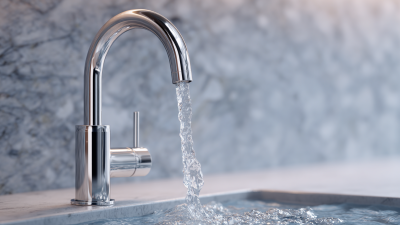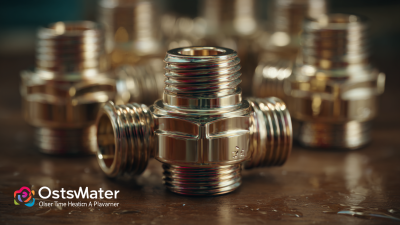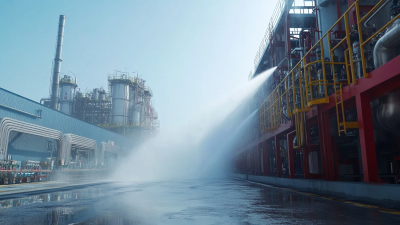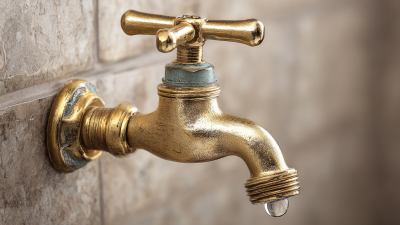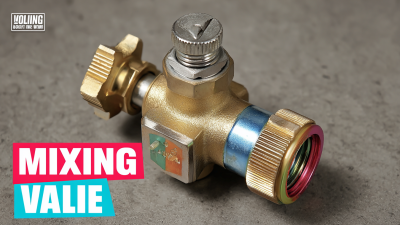When it comes to enhancing your bathroom experience, the selection of the right shower hose is often overlooked, yet it plays a crucial role in maintaining optimal water pressure and longevity. According to a recent industry report by Research and Markets, the global bathroom accessories market, including shower components, is projected to reach over $85 billion by 2025, highlighting the growing importance of quality fixtures in modern bathrooms.
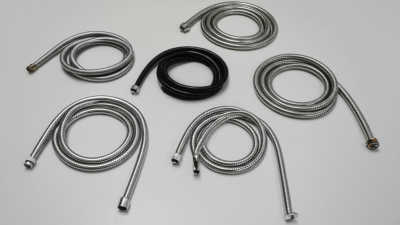
A well-chosen shower hose not only ensures a steady flow of water, but also withstands wear and tear over time, thereby supporting the sustainability of bathroom products. With numerous options available in terms of materials, lengths, and fittings, understanding how to choose the right shower hose becomes vital for homeowners seeking both performance and durability.
Investing time in this decision can lead to significant improvements in daily routines and overall satisfaction with your bathroom setup.
When selecting a shower hose, understanding the
material's impact on water pressure is crucial for an optimal shower experience.
High-quality materials not only affect the durability and longevity of the hose but also
play a significant role in maintaining consistent water pressure. According to a study
by the American Plumbing Manufacturers Association, hoses made from stainless steel
and reinforced PVC can withstand higher pressures and temperature fluctuations,
ensuring a steady flow of water without compromising performance.
Moreover, the flexibility and weight of the hose material can influence user experience.
A lighter hose, made from high-grade rubber or flexible
PVC, can reduce the risk of kinking and enhance maneuverability, allowing for better water
distribution and user comfort. A report by the National Kitchen and Bath Association indicates that users
prefer shower systems with minimal resistance, which is often achieved by selecting the
right hose material. Ensuring the hose is designed with features that support optimal
pressure, like a smooth inner lining, can significantly enhance water flow
rates and overall satisfaction during use.
When evaluating the optimal length for a shower hose, it's essential to recognize the direct impact on water flow and overall user experience. A standard shower hose typically ranges from 59 to 79 inches long. However, the length you choose can significantly affect water pressure. According to industry research conducted by the Plumbing Manufacturers International Association, long hoses can result in a pressure loss of up to 1.5 PSI for every additional foot of hose. This means that an excessively long hose could lead to weaker water flow, potentially detracting from the refreshing experience of a shower.
Furthermore, practical usage considerations come into play when selecting hose length. A longer hose may provide flexibility, allowing users to maneuver comfortably while showering. However, it can also require additional maintenance due to the increased risk of kinks or leaks. The Home Improvement Research Institute notes that approximately 20% of shower hose failures are attributed to improper length leading to undue wear and tear. Therefore, finding the right balance between convenience and efficacy is crucial for maintaining optimal water pressure and ensuring the longevity of the shower hose.
When selecting a high-quality shower hose, several key features can significantly enhance both water pressure and durability. First and foremost, the material of the hose is crucial; look for options made from reinforced stainless steel or high-grade plastic. These materials not only resist kinking and tangling but also withstand corrosion and high pressure. Additionally, pay attention to the inner diameter of the hose. A wider diameter allows for a more unrestricted flow of water, which helps maintain optimal pressure during use.
Another important aspect to consider is the length of the shower hose. A longer hose provides more flexibility and easier maneuverability while showering, but it’s essential to balance this with the need for adequate water pressure. Ideally, choose a length that suits your shower setup without compromising the force of the spray. Lastly, check for smart design features such as anti-twist technology and easy-to-grip connectors, which ensure a seamless experience and longer lifespan of the hose. Investing in a hose that includes these features will contribute significantly to a more enjoyable and efficient showering experience.
Maintaining your shower hose is essential for ensuring both optimal water pressure and longevity. Regular cleaning is one of the simplest yet most effective maintenance tips. Over time, mineral deposits can build up inside the hose, diminishing water flow. To prevent this, consider soaking the hose in a solution of vinegar and water for a few hours, then flushing it with clear water to remove any lingering deposits.
Another important tip is to check for leaks. Regularly inspect the hose and its connections for any signs of wear or damage. If you notice a leak, replace the rubber washers to create a better seal. This not only improves water pressure but also prevents water from dripping and wasting resources.
Lastly, avoid kinking the hose during use or storage, as this can cause damage and reduce its lifespan. Instead, gently coil it when not in use and ensure that it hangs freely. By following these simple maintenance practices, you can extend the life of your shower hose, ensuring consistent performance for years to come.
Choosing the right shower hose can significantly impact your shower experience, especially when it comes to water pressure and the longevity of your installations. However, many people unknowingly make common mistakes that hinder their bathroom’s functionality. One prevalent error is selecting a hose that’s either too short or too long, leading to awkward movement during showers and reduced pressure. Aim for an optimal length that provides flexibility without excessive slack.
Another frequent pitfall is overlooking the material of the shower hose. Many choose cheaper options that can wear out quickly, leading to kinks and leaks over time. It’s essential to invest in a durable hose, preferably one with a reliable protective coating, to avoid the constant need for replacement. Additionally, people often disregard compatibility with existing fixtures; without proper fittings, even the best hose can become a frustrating source of leaks. By being aware of these mistakes, you can enhance your overall shower experience and ensure your investment lasts longer.
